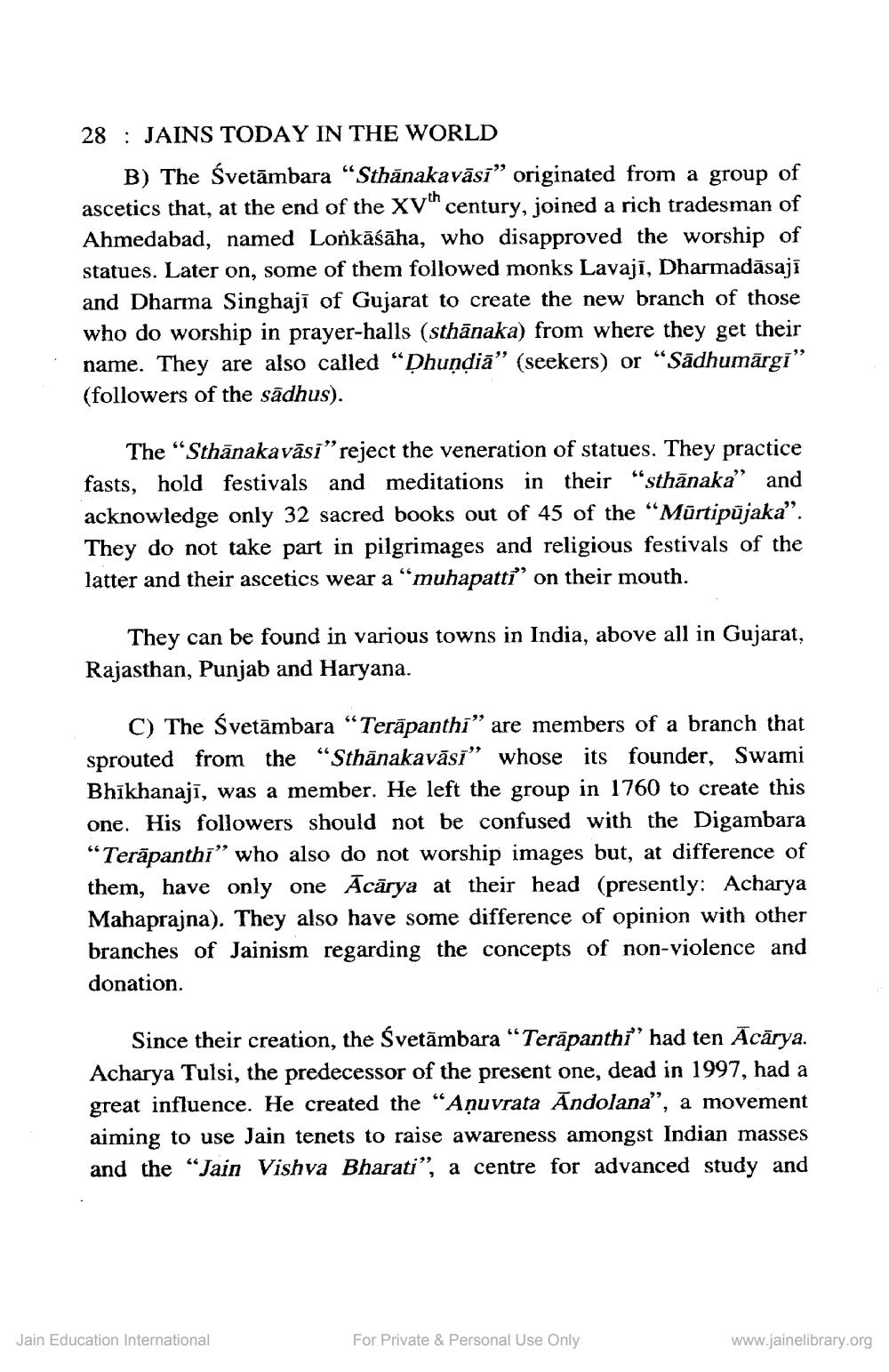________________
28 : JAINS TODAY IN THE WORLD
B) The Svetāmbara “Sthanakavāsī” originated from a group of ascetics that, at the end of the XVh century, joined a rich tradesman of Ahmedabad, named Lonkāśāha, who disapproved the worship of statues. Later on, some of them followed monks Lavaji, Dharmadāsaji and Dharma Singhaji of Gujarat to create the new branch of those who do worship in prayer-halls (sthānaka) from where they get their name. They are also called “Dhundiā” (seekers) or “Sadhumārgi” (followers of the sādhus).
The “Sthānakavāsi” reject the veneration of statues. They practice fasts, hold festivals and meditations in their "sthānaka" and acknowledge only 32 sacred books out of 45 of the “Mārtipūjaka”. They do not take part in pilgrimages and religious festivals of the latter and their ascetics wear a “muhapatti" on their mouth.
They can be found in various towns in India, above all in Gujarat, Rajasthan, Punjab and Haryana.
C) The Svetāmbara "Teräpanthi” are members of a branch that sprouted from the “Sthānakavāsī” whose its founder, Swami Bhīkhanajī, was a member. He left the group in 1760 to create this one. His followers should not be confused with the Digambara “Terapanthi” who also do not worship images but, at difference of them, have only one Ācārya at their head (presently: Acharya Mahaprajna). They also have some difference of opinion with other branches of Jainism regarding the concepts of non-violence and donation.
Since their creation, the Svetāmbara "Terāpanthi" had ten Ācārya. Acharya Tulsi, the predecessor of the present one, dead in 1997, had a great influence. He created the “Aņuvrata Andolana”, a movement aiming to use Jain tenets to raise awareness amongst Indian masses and the “Jain Vishva Bharati”, a centre for advanced study and
Jain Education International
For Private & Personal Use Only
www.jainelibrary.org




